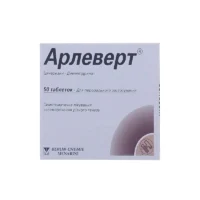Description
Sulpirid-ZN (sulpiride) Solution for Injections 50 mg/ml, 2 ml Ampoules №10
Ingredients:
Each 2 ml ampoule contains 100 mg of sulpiride.
Dosage:
The usual dose ranges from 50-200 mg per day, given in divided doses. Dosage adjustments may be necessary depending on the specific condition being treated.
Indications:
Sulpiride is prescribed for the management of schizophrenia and other psychotic disorders. It is effective in addressing symptoms like hallucinations, delusions, and cognitive disturbances associated with these conditions.
Contraindications:
Avoid using Sulpirid-ZN if you have a known allergy to sulpiride or a history of neuroleptic malignant syndrome. This medication is not suitable for individuals with pheochromocytoma or severe renal/hepatic dysfunction.
Directions:
Sulpiride should be administered via intramuscular or slow intravenous injection under the supervision of a healthcare professional in a clinical setting.
Scientific Evidence:
Sulpiride functions as a selective dopamine D2 receptor antagonist. Studies, including research in the Journal of Clinical Psychopharmacology, have highlighted its efficacy in alleviating both positive and negative symptoms of schizophrenia when compared to a placebo.
Additional Information:
- Pharmacological Effects: Sulpiride exerts its therapeutic actions by blocking dopamine receptors in the brain, thereby reducing psychotic manifestations.
- Clinical Trials: Clinical trials have demonstrated the favorable tolerability profile and efficacy of sulpiride in managing schizophrenia, with minimal extrapyramidal side effects reported.





